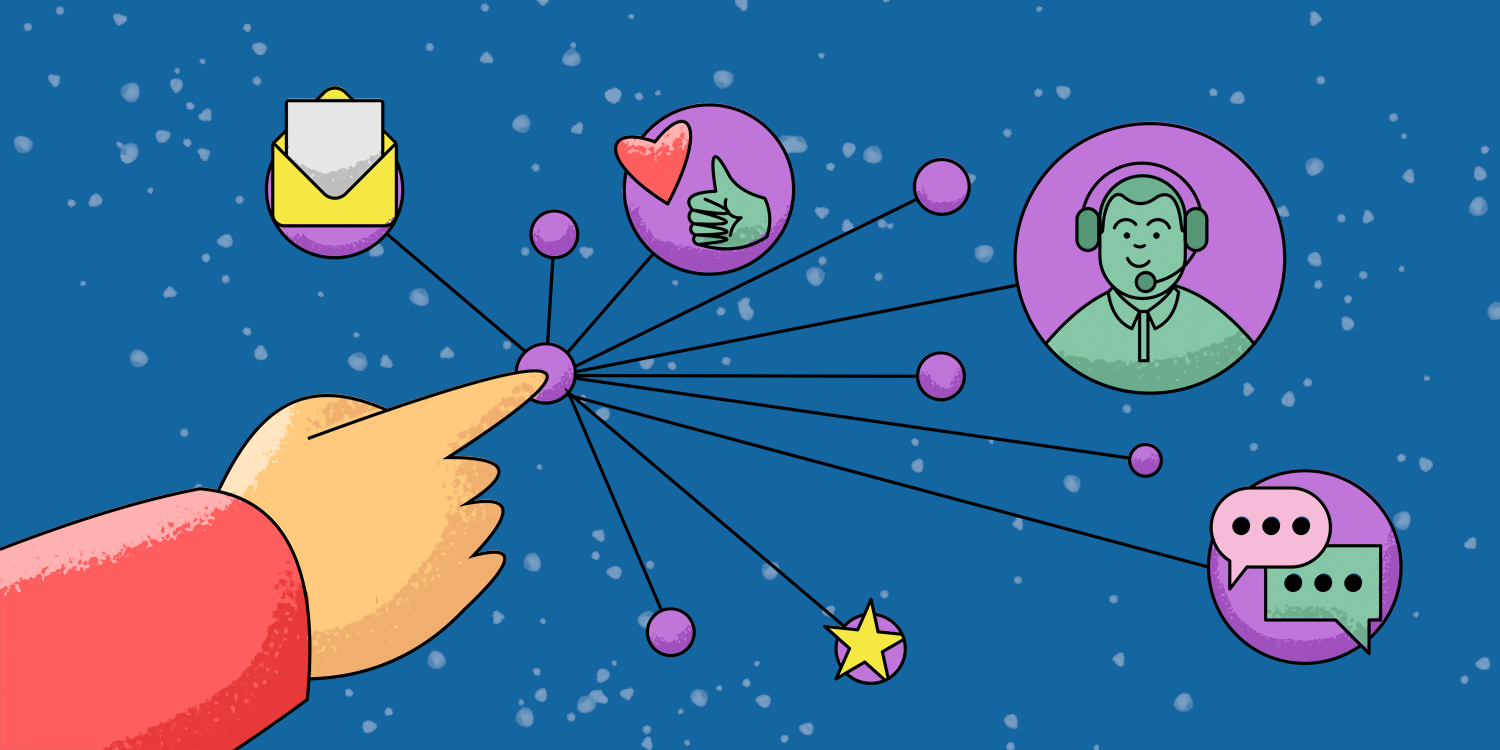Customer satisfaction is a top priority for any business. If you don’t keep your clients in mind at every stage of the sales funnel, you may be missing an opportunity.
The truth is, no matter how excellent your product, service, and teams are, a misstep in any one of these areas may cause customers to lose faith in you and your company. No worries, though! You can control a vast majority of customer touchpoints. But first, you have to know what these are and how to identify all of them.
Outline:
What is a customer touchpoint?
Your customers’ experience with your brand can’t be improved until you know what they go through. It is defined by touchpoints where they interact with your brand. Typically, customers begin with touchpoints associated with your brand’s first recognition. There are also touchpoints when it comes to purchasing and retention stages.
To improve the customer journey, think of each touchpoint as a chance to impress your clients.
Touchpoints are generally grouped to leverage and establish a consistent brand experience and develop a favorable brand perception, tighter relationships with customers, and a greater retention rate for the brand itself.
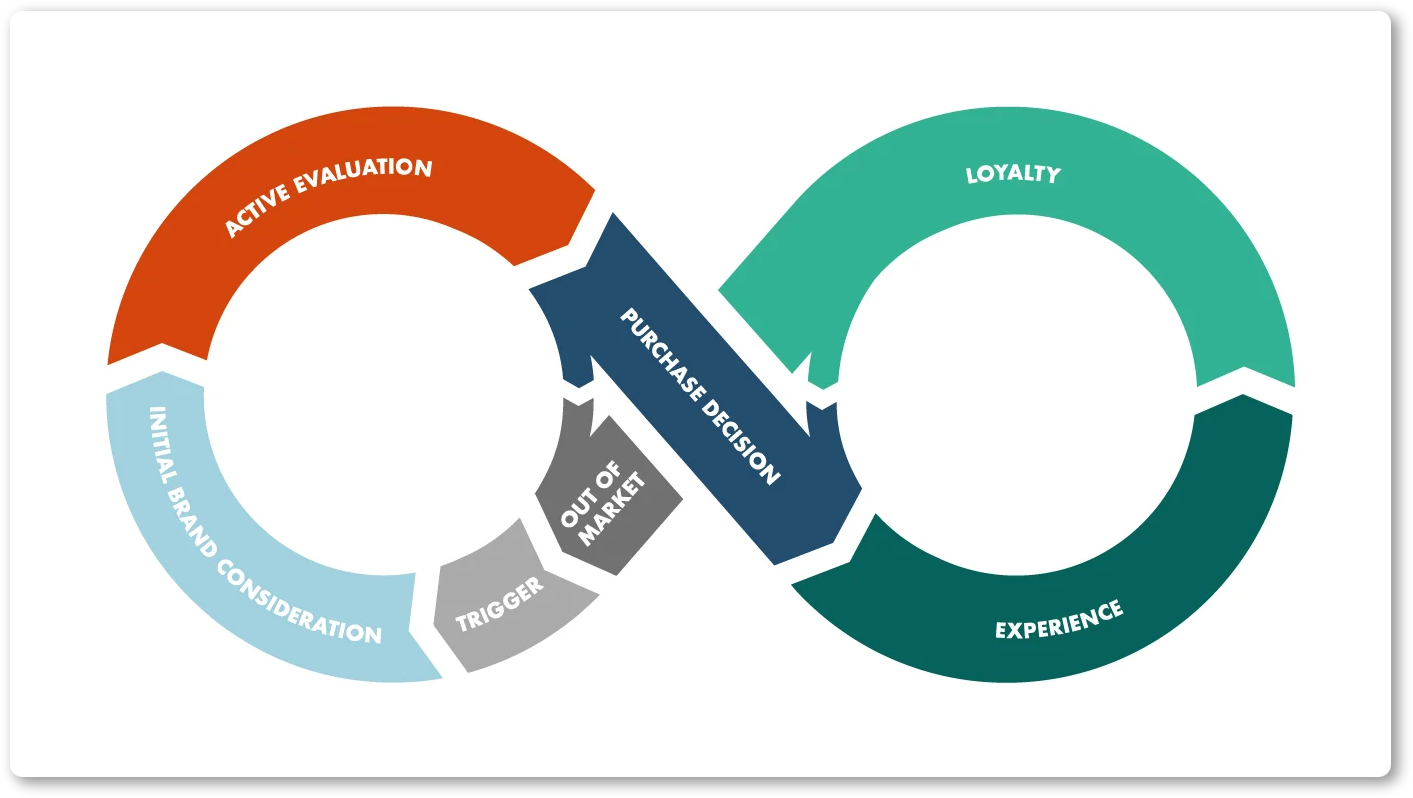
Companies can focus on enhancing certain areas of the experience rather than rethinking the entire trip when they know and understand how customers feel at these touchpoints. This way, businesses can adapt their strategy rather than stick to a universally applicable perspective.
|
💡 Pro-tip Improve your business strategy by reaching out only to targeted leads. Implement Snov.io’s email address search and email verifier into your prospecting and get high-quality contacts on any website in a matter of second. |
What is the significance of customer touchpoints?
Knowing and having several touchpoints isn’t enough to succeed in today’s market. It’s also essential to exhibit innovation in each of those areas. They help tell the tale of the brand and its identity. Customers’ perception of your company can be favorably or adversely influenced by touchpoints, whether it’s a video, a salesperson, or an email.
It’s also possible to spread client loyalty across all channels by investing in customer touchpoints. A target market’s “trust points” are ideal touchpoints. Investing time and money in them is vital for businesses, and this can be achieved by actively listening to your clients through surveys and reviews.
Besides, a study from Aberdeen Group found companies who actively manage their touchpoints and customer journeys have a 54% greater return on marketing investment.
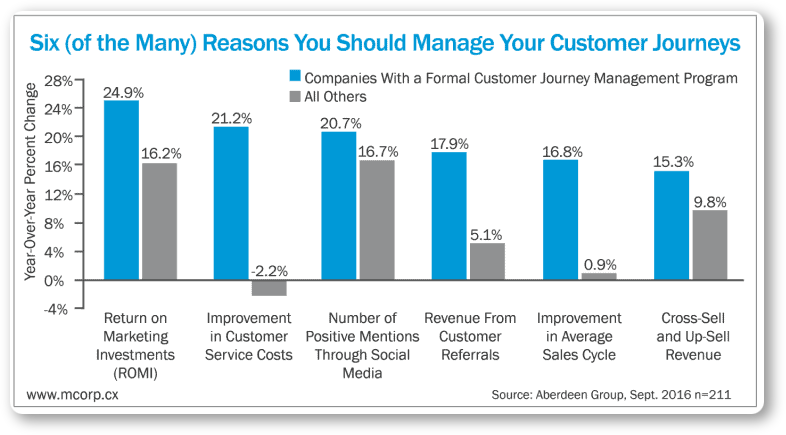
Positive brand image and high customer engagement can only be achieved if all touchpoints are consistent in terms of design and ease of use. Ultimately, your customer’s experience with your brand is based on the trip you take them on.
Examples of customer touchpoints
When does the buying process begin? At what point do your buyers discover you? When do they need to address a problem? Have they started their investigation? Are they making comparisons? What has been their experience before, during, and after the sale?
These are some of the questions you need to ask yourself to identify touchpoints and empathize with your clients’ experience regarding your business.
If your site is outdated or hard to browse, if it lasts too long to load, or if your images are of low quality, you can lose customers at any moment. Do you reply to complaints and strive to resolve them? Do you thank individuals for positive feedback?
Many customers also avoid purchasing items online because the process is too cumbersome, it takes far too long to fill out their information, or the shipping prices are unclear. After a successful purchase, you might turn customers off by hammering them with sales emails.
Take it one step at a time, making sure that your business is viewed favorably by the buyer so that they choose you over your competition.
To help you know when to intervene and improve your customers’ experience, we’re enumerating below some real-world examples of touchpoints at various stages of the customer buying journey.
Let’s dive in!
Touchpoints during the pre-purchase stage
Search engines
When faced with a new challenge or opportunity, many individuals first turn to Google for answers. Prospects at this stage prefer to do comprehensive, generic searches to understand their current condition better. And every time people use Google to search and come across your material, it’s a touchpoint.
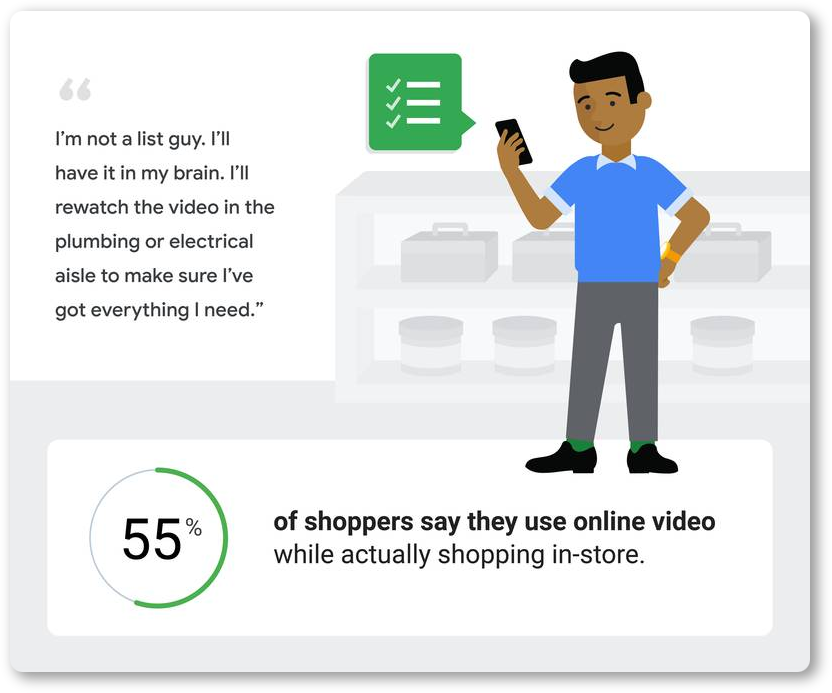
Referrals
Pre-purchase and awareness stages of the customer journey frequently rely heavily on referrals. Trillions of dollars in worldwide expenditure are influenced by word-of-mouth.
Imagine two close friends are discussing student loan refinancing. If one has a positive experience with your brand, they are more likely to spread the word about you. Afterward, the other person will most likely look into your firm and see whether you have better interest rates than the competition. And since referrals convert at a considerably greater rate than non-referrals, the chances are good that they’ll buy from you.
Social media
Social media can be utilized at any step of the pipeline, but it is most efficient when acquiring new customers. It lets you reach a vast portion of your intended audience for a minimal cost. Authentic encounters with potential customers are also possible, which helps develop trust.
Videos
YouTube is the world’s most popular vertical search engine and is often the first point of contact for customers. It’s common for YouTube videos to appear in search results even if a user hasn’t specifically searched for them.
The more you know about your target audience, the more you can tailor your videos to their needs. As a result of the increased level of audience involvement, a video is a good choice for the pre-purchase stage of the buying process. In addition, visual information is more straightforward for many people to retain.

Company events
To meet your intended audience face-to-face, you should attend trade exhibitions or conferences. As a result of your participation in the event, your brand will be more known, and you will secure future collaborations.
Printed adverts
Print ads still raise awareness of a company, even if they are less successful than they were during the recent decades. Compared to other marketing channels, they have a cheap cost of brand exposure.
Your web page
A customer’s first impression of your brand is likely to be shaped by the content on your website. Your marketing efforts should revolve around it. The goal of your company’s website should be to entice visitors to learn more about your brand, read your content, and make a purchase.
You’ll make a good impression if your site is easy to use, has an appealing message, and has essential material that solves your customers’ concerns.
Touchpoints during the purchasing stage
Contacts with company representatives
You have the most direct touch with clients when you meet them face-to-face. These in-store dialogues directly influence your customers’ buying decisions.
Catalogs of products
There are several advantages to catalogs, whether they’re digital or printed. The buyer is given all the information they need to decide based on a product picture and an intriguing description. A call-to-action that adds the item to a shopping cart might reduce friction.
Online shopping
eCommerce has become an essential part of the business strategy for many companies. Why? Because the internet allows small businesses to sell goods and services to customers all over the world, even if they are located in a different country. Online companies can significantly benefit from a better understanding of numerous touchpoints in eCommerce.
Product reviews
Reviews are no longer a pre-purchase touchpoint in today’s digital world. Customers now have digital phones to access product reviews as they shop in your stores. It’s also possible to check what other people say about a product without leaving the listing page.
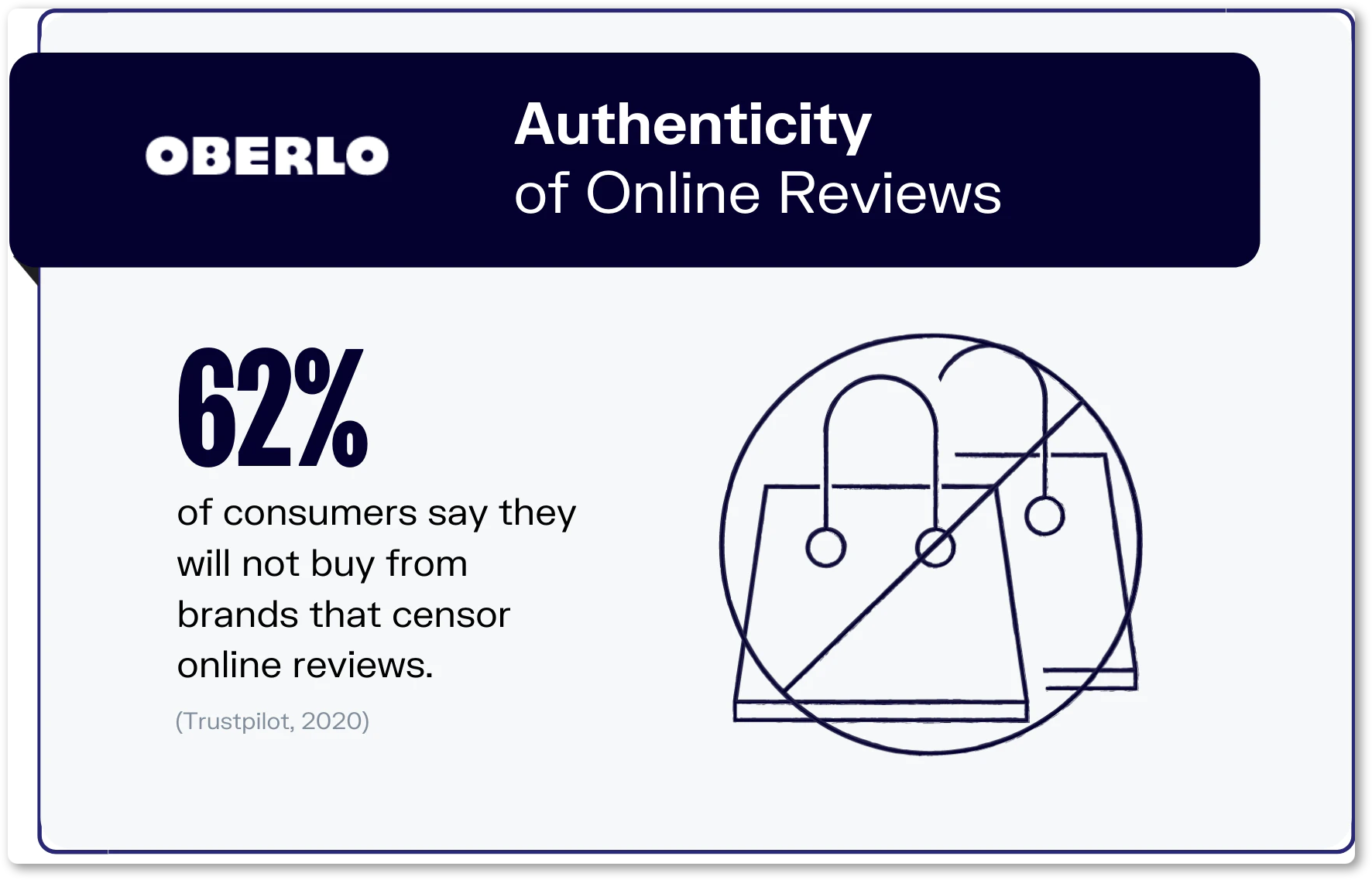
Point of sale
This is the final touchpoint your clients will encounter before making a purchase. And this is where your sales rep presents their case for why the customer needs your product.
Touchpoints during the post-purchase stage
Thank you letter
Sending a thank-you note after a transaction is completed is a successful strategy for fostering customer loyalty. Thanking clients can be done via email or in the form of a hand-written thank you note. You can use it to show your customers you care and want to build a long-term connection with them.
|
Send all kinds of messages and emails with the Snov.io LinkedIn prospecting tool! ✅ Expand your contact base with verified email addresses. ✅ Set up multichannel drip campaigns and add automated touches, such profile views and personalized connection requests. ✅ Operate within the platform’s guidelines, and don’t worry about the safety of your data—Snov.io will take care of everything! Including a cloud-based operation and a dedicated proxy for each LinkedIn account you connect. ✅ Analyze the performance and adjust your strategy accordingly. |
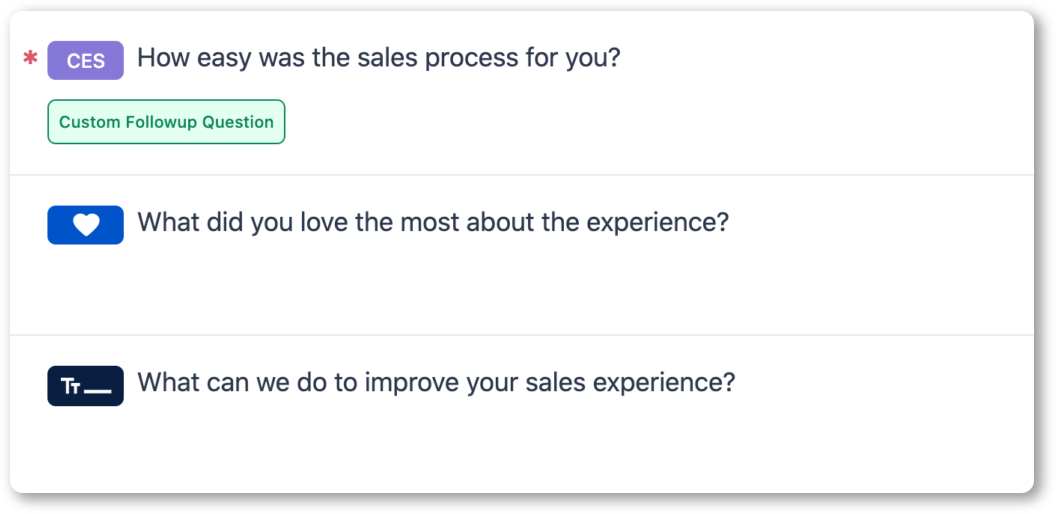
Emails for upselling and cross-selling
After a customer makes a purchase, their needs don’t go away. When clients begin using your product, they may have new requirements. You can use this as a chance to sell or cross-sell more expensive or supplementary things.
Billing actions
Billing is a touchpoint that is often missed on the touchpoint list. Customers aren’t influenced by post-purchase advertising because it occurs after they’ve already purchased your goods. The customer’s journey is still crucial since a bad experience might lead to fast churn if it isn’t addressed effectively.
Renewal of subscriptions
Renewals are a critical part of the revenue strategy for subscription-based businesses. Customers renewing their memberships is essential to your company’s success. Therefore, your renewal procedure must be as friction-free as possible.
Programs for customer success
A wide range of touchpoints can be found in customer success initiatives. Whenever there is a possible problem, the customer success department reaches out to the customer base to inform them of the issue or provide an alternative solution. This indicates a long-term dedication to the client’s goals, which helps create trust.
Onboarding of new customers
Client onboarding has become a common point of contact for customer service teams. People don’t know how to utilize a product or don’t have the opportunity to study it. Companies should invest in excellent onboarding programs to avoid attrition.
Customer retention programs
It’s crucial for service personnel to be aware of the importance of loyalty programs. Customers that participate in these initiatives are more likely to become long-term champions for your company. Your customers will be more inclined to post favorable reviews about your brand if you offer them unique perks and discounts.
Wrapping up
Keep in mind that a company’s corporate culture revolves around the needs of its customers. Aside from that, when it comes to creating new products or services, good companies always keep their customers’ needs in mind.
You can create a better user and customer experience if you have an in-depth understanding of each touchpoint. User and client journey mapping can also benefit from this insight. It’s possible to enhance touchpoints outside your influence by improving those within your control.
You can also participate in every stage of the client’s journey by utilizing touchpoints. Identifying them allows you to supply specific and timely information to customers. Whether you’re a one-person firm or an enterprise-level staff, you should utilize touchpoints to improve the customer experience, which will allow you to retain more clients and expand more efficiently.
At Sales for Life, we believe in identifying both (1) risk and (2) opportunity through Signal Intelligence. We use and identify signals through several of the customer touchpoints mentioned above throughout the phases of their buying cycles. Over the years, we’ve helped global sales teams do the same, which in turn has led to better conversion rates, more wins, increased revenue, and overall pipeline growth.
